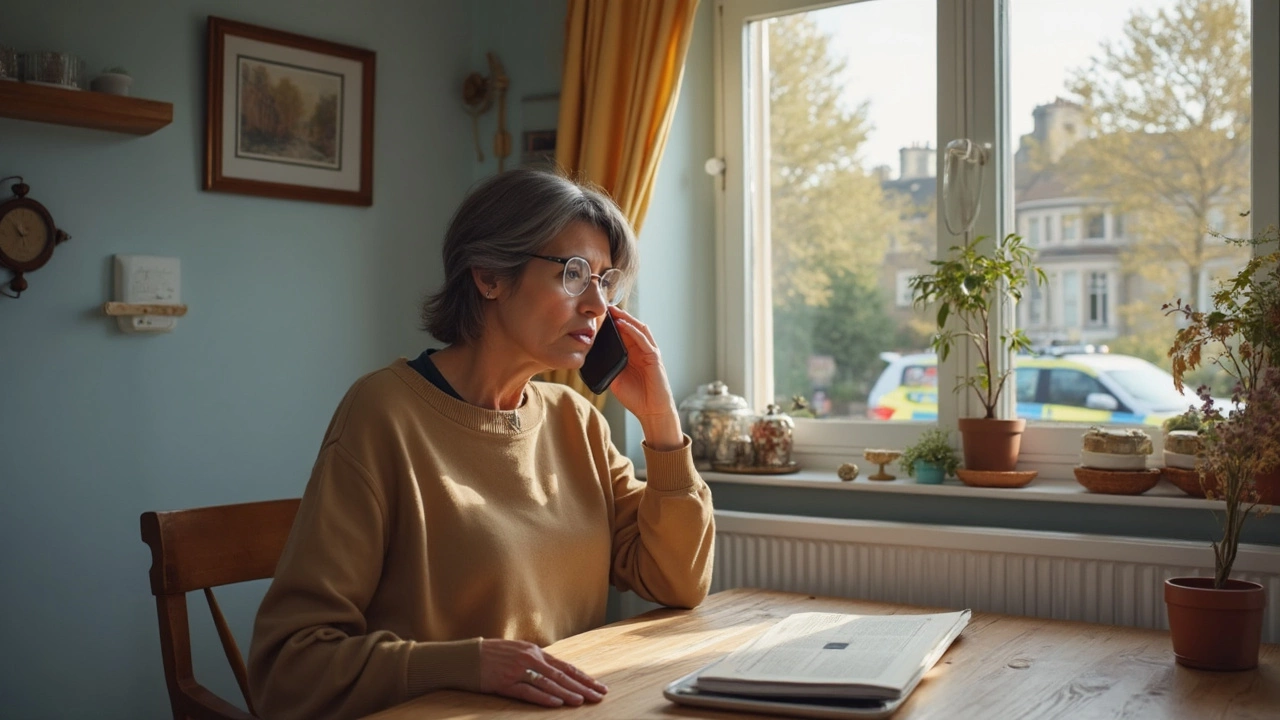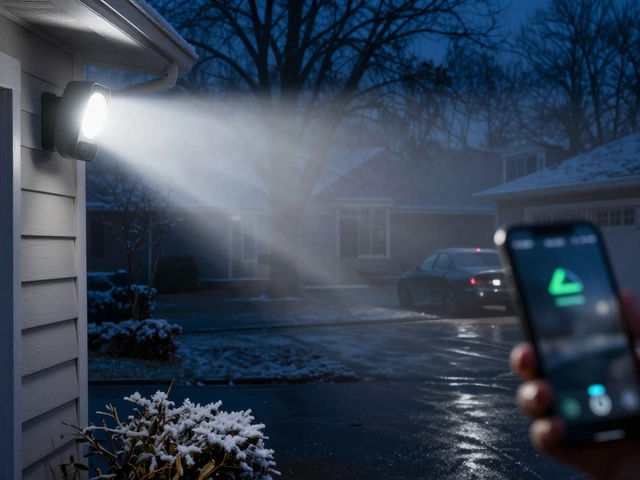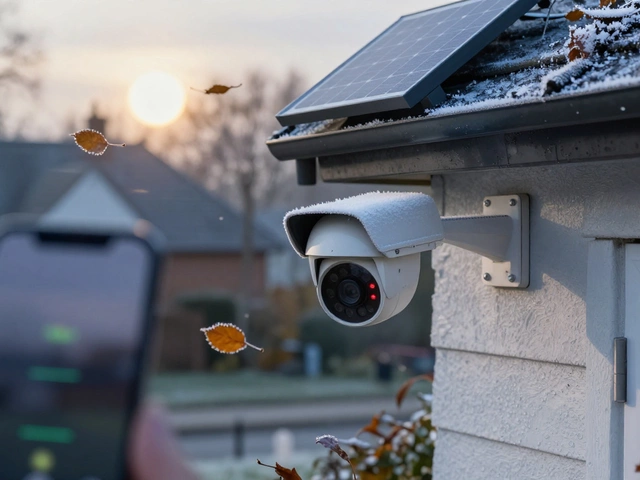If your main question is, “Will SimpliSafe just dial 911 for me if my alarm goes off?”, you’re not alone. Lots of people assume alarms mean instant police at your door. But with SimpliSafe, it’s not that cut and dry. You actually get a couple of layers between your triggered alarm and the local police.
When something sets off your SimpliSafe system, here’s what actually goes down: First, the signal hits SimpliSafe’s monitoring center. Humans—not robots—are watching out for those alerts, 24/7. Before calling in the cavalry, SimpliSafe will try to contact you through your preferred method—call or text. This quick check helps sort out real emergencies from a cat brushing past your motion sensor.
- How SimpliSafe Monitoring Actually Works
- What Triggers a Police Call?
- How SimpliSafe Verifies Alarms
- Ways to Prevent False Alarms
- Maximizing Your Security Setup
How SimpliSafe Monitoring Actually Works
SimpliSafe isn’t your old-school alarm system with blaring sirens and hoping the neighbors care. It runs through a smart network: your sensors (like entry, motion, glass break), the central base station, and a connection to SimpliSafe’s monitoring centers. Everything starts the moment one of your sensors trips.
Here’s the real process:
- When a sensor is triggered, it sends a signal to your SimpliSafe base station.
- The base station instantly relays that alert to SimpliSafe’s 24/7 monitoring center using either Wi-Fi or cellular backup (yep, it goes out even if your internet is down).
- At the monitoring center, a trained rep looks at the alert and kicks off their action protocol.
- You’ll get called or messaged (based on your preferences) almost immediately to check if everything’s alright or if there’s a real emergency.
- If you don’t answer or if you confirm it’s not a false alarm, the police or emergency services are notified right away.
This all usually happens in under a minute, start to finish. No wonder SimpliSafe got a spot as a top-rated monitored home security service for speed—lots of reviews and tests show response times averaging around 30-45 seconds from alarm to monitoring center call.
| Step | What Happens |
|---|---|
| 1 | Sensor trips and alerts the base station |
| 2 | Base station sends signal to SimpliSafe monitoring (via Wi-Fi or cellular) |
| 3 | Monitoring center contacts you for verification |
| 4 | If no response or confirmation of emergency, police are called |
Here’s something most folks don’t realize: The SimpliSafe monitoring service only kicks in if you pay for one of their plans. Their “self-monitoring” option leaves you on your own to call the authorities, which is easy to miss if you’re just skimming their product page.
The best way to get that peace of mind? Make sure your system’s connected with Professional Monitoring. This unlocks all those fast, automatic responses (and the potential for lower home insurance rates—double win).
What Triggers a Police Call?
Not every beep or blip from your SimpliSafe system leads to the police showing up. Here’s how it actually works: for SimpliSafe to call law enforcement, an alarm needs to be triggered, verified, and then classified as a real emergency. The keyword here is SimpliSafe, because their process is what makes the difference.
So, what specifically sets this off? Here’s the breakdown:
- Entry Sensors or Motion Detectors: If one of these sensors trips and you don’t punch in your PIN quick enough, the monitoring team gets an alert.
- Glassbreak Sensors: These pick up the unique noise of glass shattering—think someone actually breaking a window.
- Panic Buttons: Hit one of these, like the one you keep by your bed, and the system immediately notifies the monitoring service.
- Duress PIN: If you use a specific “under duress” PIN, SimpliSafe treats things as a silent alert—dispatching police discreetly.
But here’s the catch: SimpliSafe tries to verify the alarm first. Unless you’ve chosen the “no call, just send help” option (mainly for panic situations), they will call or text responsible contacts. If you don’t answer, or if you confirm there’s a real problem, police are notified.
If you answer the phone and say everything’s fine and give them your safe word, police usually aren’t called. But if you ignore the call, can’t give the safeword, or confirm an emergency, that’s when things really kick off.
| Type of Alarm | Police Notification? | Verification Required? |
|---|---|---|
| Burglar Alarm | Yes, after verification | Yes |
| Panic Button | Yes, immediately | No |
| Duress PIN | Yes, silently and immediately | No |
| Environmental Alerts (Smoke/CO) | No, fire or EMS notified instead | Yes |
One stat that stands out: false alarms account for 94-98% of all burglar alarm activations in the U.S., so most alarm companies (including SimpliSafe) work hard to weed these out before sending cops. That’s why they verify most alarms first.
So, to sum it up: only certain kinds of alarms trigger calls to law enforcement, and even then, only after SimpliSafe tries to check if it’s the real deal. Know which sensors you’re using and how they work to avoid accidental run-ins with the police.

How SimpliSafe Verifies Alarms
Here’s the part that actually makes or breaks whether the SimpliSafe system gets police on your doorstep. When your alarm starts blaring, the monitoring center doesn’t straight-up call 911. They follow a couple of steps to weed out false alarms and real emergencies.
- Step 1: Immediate Alert. The moment an entry, motion, or glass break sensor triggers, the system pings the monitoring center. This happens almost instantly—often in under 30 seconds.
- Step 2: Attempt to Reach You. SimpliSafe tries to contact you using the primary number listed in your account. If you answer and confirm everything is fine, they can cancel the emergency response.
- Step 3: Use of Safe Word. They’ll ask you for a “safe word” or passcode. If you give the right one, they stand down. Wrong answer or no answer? They move to alert the authorities.
- Step 4: Visual Verification (for some users). If you have a SimpliCam or Video Doorbell Pro, the monitoring folks can check quick video clips attached to the alert. This helps them decide whether a real break-in or just a curtain moving in the wind triggered your alarm.
If SimpliSafe can’t reach you or if the video shows suspicious activity, they contact your local police. This system makes a huge dent in unnecessary police dispatches, which is a big deal—one study in 2023 showed that over 90% of alarm triggers were false alarms or user error.
| Event | What SimpliSafe Does |
|---|---|
| Alarm triggered | Monitoring center notified instantly |
| No answer from you | Police notified if alarm type needs it |
| False alarm confirmed | No action taken; police not contacted |
| Video evidence available | Used to verify urgency |
Not all home security companies actually bother with this much checking. SimpliSafe’s fast response plus these verification steps really cut down on headaches for everyone—cops, you, and your neighbors. Keep your contact info up to date and make sure everyone in the house knows the safe word. That way, you skip the hassle if the dog knocks over a lamp at 2 a.m.
Ways to Prevent False Alarms
False alarms can get annoying fast. They also have real consequences—too many calls can mean fines from your city or even slow down police response. If you own a SimpliSafe system, a little setup work can save you headaches and maybe even some money.
First, make sure all your sensors are installed according to SimpliSafe’s own guidelines. For example, motion sensors should be placed five feet off the ground and away from vents or windows where drafts or sunlight could cause problems. If you’ve got pets, choose SimpliSafe’s pet-friendly settings. This reduces the chance of your dog or cat triggering an alarm when they’re just being themselves.
- Test your system monthly using the “Test Mode” feature in your SimpliSafe app or keypad—don’t just guess everything is working right.
- Double-check all entry sensors are properly stuck down and not hanging loose on doors or windows, especially after cleaning, remodeling, or moving things around.
- Update your emergency contact list in the SimpliSafe app. Make sure they’re reliable and know what to do if SimpliSafe calls them.
- Always disarm your alarm before opening a door or window, even just to grab the mail.
Here’s how much false alarms can impact you, depending on where you live:
| City | False Alarm Fees (2025 average) |
|---|---|
| Los Angeles | $200 (after 1 free) |
| Atlanta | $150 (starting first offense) |
| Dallas | $100 (after 3 free) |
| Boston | $50 (after 1 free) |
One last tip: if you ever change your Wi-Fi or lose power for more than a few minutes, run a quick system test to make sure everything’s still connected. These steps keep your alarm system reliable—and stop those late-night accidental wakeup calls.

Maximizing Your Security Setup
Once you’ve got your SimpliSafe system installed, there are a few smart moves that can take your home security up a notch. It’s not just about sticking sensors on doors—details matter here.
First, take a walk around your place and think like a burglar. Are your sensors in the best spots? Front and back doors, garage entry, and ground-level windows are the top priorities. If you didn’t add extra entry sensors or motion detectors at checkout, you can still pick them up separately.
- Change out default PINs and set up your Safe Word. That’s key, because when the monitoring center calls during an alarm, they’ll ask for it. Make it something you can say fast under stress but not too obvious.
- Don’t ignore system test mode. Run a test every month. The SimpliSafe app makes it easy—just go to the "Test" menu, and the monitoring team will know you’re only checking things out. This catches weak batteries or sensors that got bumped out of place.
- Set up custom alerts in the app. You can get notifications for everything from sensor triggers to someone arming or disarming the system. This helps you keep tabs on what’s happening, even when you’re halfway across the world.
Here’s a pro tip: If you ever get new Wi-Fi, don’t forget to reconnect your base station. That’s how it talks to the monitoring crew. And remember, if you want real police dispatch, you need to subscribe to a professional monitoring plan—without it, SimpliSafe just makes local sirens go off, nothing else. This is where alarm monitoring really counts.
Add a smoke or CO sensor if you haven’t already. They’re monitored, too—so fire and rescue will get called even if you’re not home. Finally, don’t let your keypad battery die. A super simple but overlooked thing: those AAAs only last so long. When it warns you, swap them out right away.
With a little effort on setup and routine checks, you can squeeze every bit of reliability and value from your SimpliSafe gear. Staying hands-on is how you stop problems before they turn into real emergencies.






